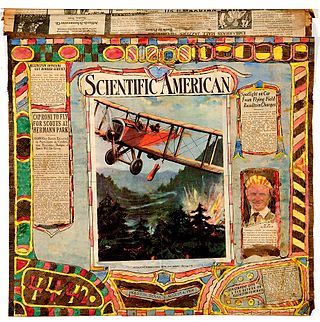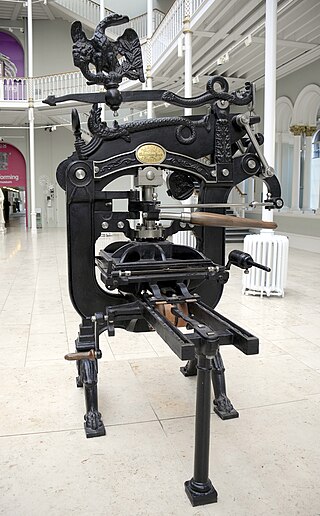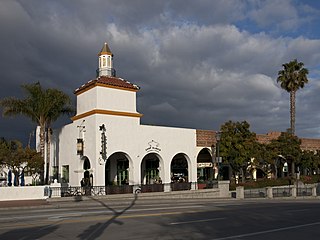Related Research Articles

The hobby of collecting includes seeking, locating, acquiring, organizing, cataloging, displaying, storing, and maintaining items that are of interest to an individual collector. Collections differ in a wide variety of respects, most obviously in the nature and scope of the objects contained, but also in purpose, presentation, and so forth. The range of possible subjects for a collection is practically unlimited, and collectors have realised a vast number of these possibilities in practice, although some are much more popular than others.

Charles August Albert Dellschau was a Prussian-American who gained posthumous fame after the discovery of his large scrapbooks that contained drawings, collages and watercolors of airplanes and airships. He has been classified as one of the first visionary artists.

William Spratling was an American-born silver designer and artist, best known for his influence on 20th century Mexican silver design.

The Columbian press is a type of hand-operated printing press invented in the United States by George Clymer, around 1813. Made from cast iron, it was a very successful design and many thousands were made by him and by others during the 19th century. Columbians continued to be made as late as the early-20th century, 90 years after their introduction. Despite their age, many are still used for printing, especially by artists who make prints using traditional methods.

Lionel H. ("Spike") Pries, was a leading architect, artist, and educator in the Pacific Northwest.
René d'Harnoncourt was an Austrian-born American art curator. He was Director of the Museum of Modern Art, New York, from 1949 to 1967.

The Fenton Art Glass Company is a glass manufacturer founded in 1905 by brothers Frank L. Fenton and John W. Fenton.

Primavera is a fine arts and crafts gallery at 10 King's Parade in Cambridge, England. Henry Rothschild founded Primavera in 1945 in Sloane Street, London, in order to promote and retail contemporary British art and craft. The Cambridge branch of Primavera was opened in 1959.

Charles Sequevya Loloma was a Hopi Native American artist known for his jewelry. He also worked in pottery, painting and ceramics.

The Mingei International Museum is a non-profit public institution in Balboa Park in San Diego, California, that collects, conserves and exhibits folk art, craft and design. The museum was founded in 1974, and its building opened in 1978. The word mingei, meaning 'art of the people,' was coined by the Japanese scholar Dr. Sōetsu Yanagi by combining the Japanese words for all people and art.

Martha Hopkins Struever (1931–2017) was an American Indian art dealer, author, and leading scholar on historic and contemporary Pueblo Indian pottery and Pueblo and Navajo Indian jewelry. In June 2015, a new gallery in the Wheelwright Museum of the American Indian, was named for her. The first permanent museum gallery devoted to Native American jewelry, the Martha Hopkins Struever Gallery, is part of the Center for the Study of Southwestern Jewelry.

Mexican handcrafts and folk art is a complex collection of items made with various materials and intended for utilitarian, decorative or other purposes. Some of the items produced by hand in this country include ceramics, wall hangings, vases, furniture, textiles and much more. In Mexico, both crafts created for utilitarian purposes and folk art are collectively known as “artesanía” as both have a similar history and both are a valued part of Mexico's national identity. Mexico's artesanía tradition is a blend of indigenous and European techniques and designs. This blending, called “mestizo” was particularly emphasized by Mexico's political, intellectual and artistic elite in the early 20th century after the Mexican Revolution toppled Porfirio Díaz’s French-style and modernization-focused presidency. Today, Mexican artesanía is exported and is one of the reasons why tourists are attracted to the country. However, competition from manufactured products and imitations from countries like China have caused problems for Mexico’s artisans.
Los Angeles Modern Auctions (LAMA) is the first auction house to specialize in 20th century Modern art and design. Founded by Peter Loughrey in 1992, LAMA especially champions Modern and Contemporary works by California and West Coast artists and designers.

Paul Edmund Flato, was an American jeweler, based in New York City from the 1920s to the early 1940s. Considered the first celebrity jeweler, he was well known for important jewelry, and as an early proponent of whimsical pieces. His long list of movie star clients included Greta Garbo, Mae West, Rita Hayworth, Joan Crawford, Doris Duke, Ginger Rogers, Carmen Miranda, Marlene Dietrich, Katharine Hepburn, and Gloria Vanderbilt—many of whom wore his pieces on screen.
Jesús Reyes Ferreira, (1880-1977) born José de Jesús Benjamín Buenaventura de los Reyes y Ferreira and also known as Chucho Reyes, was a self-taught artist and antiques/art collector and vendor. Reyes Ferreira began painting on crêpe paper, a delicate material not meant to last, as a way of decorating paper meant to wrap sales from his antiques/art store. The decorated paper became popular enough to be sold on its own. Although he began this activity in Guadalajara, he did not produce the bulk of his work until after he moved to Mexico City when he was 58 years old. Here he continued collecting and selling objects such as colonial art and Mexican handcrafts and folk art, being one of the early exponents for the appreciation of these objects. He also spent several hours a day painting. His work was first exhibited in 1950 with his first individual exhibition in 1967 at the Palacio de Bellas Artes after a half century of painting. As a self-taught painter, his works are relatively simple and often are dismissed as folk painting but they were and his aesthetics were praised by famous artists and architects at the time.
MASP Antique Market is held on Sundays in the city of São Paulo, Brazil and offers collector's items, arts, crafts, and antiques.

Handcrafts and folk art in Mexico City is a microcosm of handcraft production in most of the rest of country. One reason for this is that the city has attracted migration from other parts of Mexico, bringing these crafts. The most important handcraft in the city is the working of a hard paper mache called cartonería, used to make piñatas and other items related to various annual celebrations. It is also used to make fantastic creatures called alebrijes, which originated here in the 20th century. While there are handcrafts made in the city, the capital is better known for selling and promoting crafts from other parts of the country, both fine, very traditional wares and inexpensive curio types, in outlets from fine shops to street markets.
Indian Art of the United States was an exhibition of Native American art mounted at the Museum of Modern Art in 1941. Curated by Frederic Huntington Douglas, then curator of Indian art at the Denver Art Museum and Rene d'Harnoncourt, then director of the Indian Arts and Crafts Board, this exhibition "filled the entire gallery space of the Museum of Modern Art with Indian works...and constituted the first full-scale exhibition of Indian art in a major American art museum."
Daphne Farago was an art collector and philanthropist.
Mitchell (Mitch) Armitage Wilder was an American mid-20th century arts administrator, scholar, and photographer. Between 1935 and 1961 he was the founding curator or director of three art museums: the Taylor Museum of the Colorado Springs Fine Arts Center, the Abby Aldrich Rockefeller Folk Art Museum at Colonial Williamsburg, and the Amon Carter Museum of American Art in Fort Worth, Texas. Additionally, as director of the Chouinard Art Institute, Wilder facilitated the incorporation of that school for animators into the California Institute of the Arts.
References
- ↑ John Moran Auctioneers (2023-11-22). "Frederick W. Davis: An American Abroad". John Moran Auctioneers. Archived from the original on 2024-02-22. Retrieved 2024-08-20.
- ↑ Ochsner, Jeffrey (2007). Lionel H. Pries, Architect, Artist, Educator: From Arts and Crafts to Modern Architecture. Seattle and London: University of Washington Press. ISBN 978-0-295-98698-2.